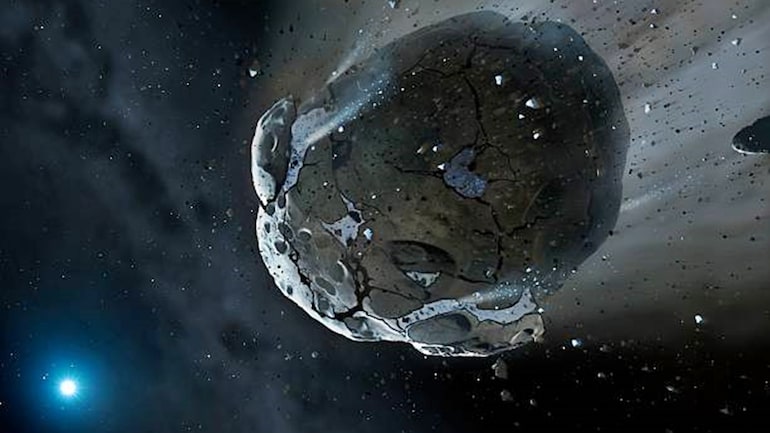Stadium-sized asteroid to whizz past Earth on July 24, Nasa puts it in dangerous category
- Get link
- X
- Other Apps
The orbit of 2008Go20, which is close to Earth, has been classified as Apollo, that holds the most dangerous asteroids.
- India Today Web Desk
- New Delhi
- July 20, 2021
- UPDATED: July 20, 2021 15:35 IST

Ahuge asteroid, about the size of a stadium, is hurtling towards Earth at a very high speed. Named '2008Go20', the asteroid will whizz past Earth on July 24.
The asteroid is cruising at over 8 kilometres per second, which is around 28,800 km/hour, a speed so high that anything coming in its way will suffer extreme catastrophe. The near-Earth object (NEO) is 20 meters wide and will be zooming by at a distance of 28,70,847,607 km, eight times the distance between Earth and the Moon.
While the asteroid will safely move past Earth, its orbit close to the planet has been classified as Apollo, which holds the most dangerous asteroids. Nasa is continuously monitoring the object.
Earlier in June, 2021KT1, an asteroid the size of the Eiffel Tower came close to the planet. Classified as "potentially hazardous", 2021KT1 made a close approach to Earth at a distance of 4.5 million km. Any object closer than 4.6 million km, is considered a potentially hazardous object.

WHAT ARE ASTEROIDS?
Asteroids are rocky fragments left over from the formation of the solar system about 4.6 billion years ago. According to the Nasa Joint Propulsion Laboratory (JPL), which tracks asteroid movement, an asteroid is classified as a near-Earth object when its distance from our planet is less than 1.3 times the distance from Earth to the Sun (the Earth-Sun distance is about 93 million miles).
The orbital paths of asteroids are at times influenced by the gravitational pull of planets, which cause their paths to alter.
CHECK THESE OUT
MORENasa tracks over 26,000 near-Earth asteroids and over 1,000 of these are considered potentially hazardous. The agency tracks the movement of the asteroid around Sun to establish its location, computing an elliptical path that best fits the available observations of the object.
Meanwhile, researchers at China's National Space Science Center found in simulations that 23 Long March 5 rockets hitting simultaneously could deflect a large asteroid from its original path by a distance of 1.4 times the Earth's radius. Their calculations are based on an asteroid dubbed Bennu, orbiting the Sun, which is as tall as the Empire State Building of New York.
Click here for IndiaToday.in’s complete coverage of the coronavirus pandemic.






